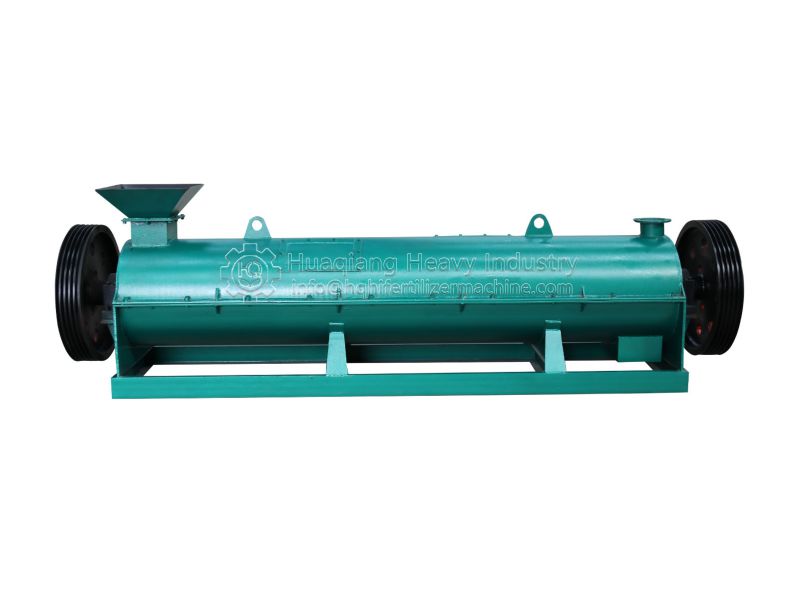


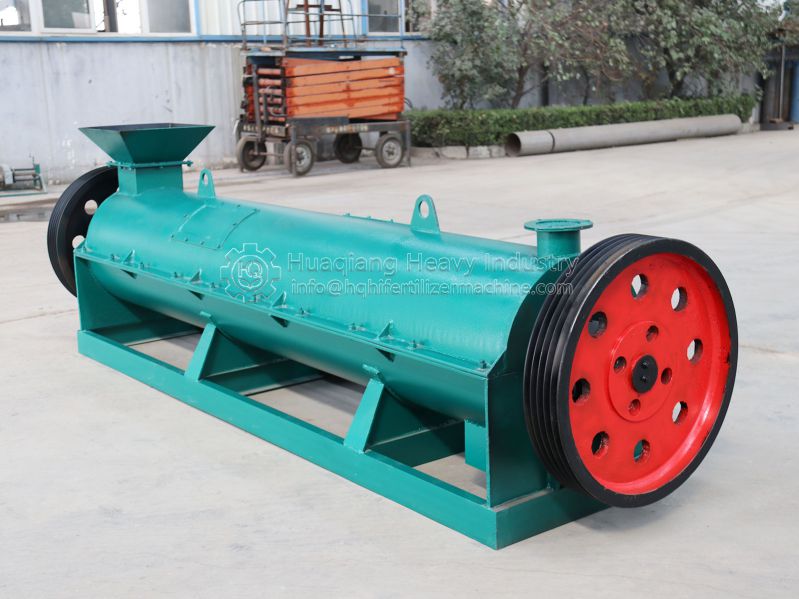
.jpg)

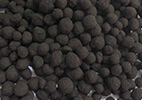
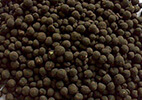
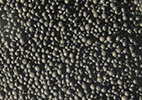
new type organic fertilizer granulator
The new type organic fertilizer granulator utilizes high-speed rotating agitator teeth to produce granules. Its unique agitation and granulation method has distinguished it in the field of granule production. Its core operating principle is to feed the mixed material into the granulation drum, where the high-speed rotating agitator teeth vigorously stir, impact, and tumble the material. This causes the material to gradually agglomerate into granules due to friction, centrifugal force, and its own viscosity.
This granulation method does not require complex extrusion equipment and can meet the granulation needs of a variety of materials. It is particularly suitable for materials with high viscosity or containing certain fibers. Compared with other granulation equipment, the new type organic fertilizer granulator has a gentle granulation process, causes less damage to the material, and produces granules with good roundness and uniform size, making it suitable for small and medium-sized granulation production.
Where are the new type organic fertilizer granulators commonly used?
The new type organic fertilizer granulator is widely used in many fields due to its unique granulation principle and good adaptability. The specific application scenarios are as follows:
Fertilizer field
It can produce organic fertilizer, bio-organic fertilizer, compound microbial fertilizer, etc. It can ferment organic waste such as livestock and poultry manure, straw, mushroom residue, etc. into granular fertilizer, solving the problem of easy agglomeration and poor fluidity of organic fertilizer.
It excels in biofertilizer granulation, as the gentle granulation process effectively preserves the activity of the bacteria and ensures the effectiveness of the biofertilizer. It can also produce a variety of medium and trace element fertilizers to meet the specific nutrient requirements of different crops.
Other industrial fields
Chemical industry: Suitable for granulation of various viscous chemical raw materials, such as dyes, pigments, catalysts, etc., through granulation, these chemical products have better performance and storage stability.
Pharmaceutical industry: It can be used for the granulation of some traditional Chinese medicine granules and pharmaceutical excipients. The granulation process can reduce the loss of drug ingredients and ensure the quality of drugs.
Feed industry: It can mix various feed raw materials and granulate them to produce pellet feed suitable for livestock, poultry, aquatic products, etc., and improve the palatability and digestibility of feed.
How is the new type organic fertilizer granulator designed according to the granulation process?
The structural design of the new type organic fertilizer granulator is closely linked to the granulation process. All components work together to achieve efficient granulation. Its main components and functions are as follows:
Feeding device:
The screw feeder controls the speed through a variable frequency motor to feed the material into the granulation drum evenly and stably, ensuring that the feed amount matches the granulation speed and providing a guarantee for uniform granulation.
Granulating cylinder:
The diameter and length of the granulating cylinder are determined by production capacity, generally 0.5-2 meters in diameter and 1-3 meters in length. Its inner wall is smooth to reduce material adhesion and wear.
stirring teeth:
The shapes of stirring teeth are various, the most common ones are paddle type, claw type, etc. Their length and angle are optimized to enhance the stirring, impact and turning effects on the material, and promote the agglomeration of the material into particles.
Drivetrain:
The reducer converts the high-speed rotation of the motor into an appropriate speed for the stirring teeth. The speed of the stirring teeth is usually 300-1000 rpm. The power is transmitted to the stirring shaft through the coupling to ensure the stable rotation of the stirring teeth.
Water spray device:
The number and position of the nozzles can be set according to the size of the granulating cylinder to ensure that the material can be evenly wetted and promote the formation and stability of the particles.
Discharging device:Located at the end of the granulation drum, this is usually an inclined chute that transports the granules to the subsequent process. The chute is made of stainless steel to prevent material from sticking and ensure smooth discharge.
How does the tooth granulator make fertilizer?
The process of fertilizer production by the new type organic fertilizer granulator is orderly and critical. Each link affects the quality of the final product. The specific steps are as follows:
Raw material pretreatment:
For compound fertilizers, basic fertilizers such as nitrogen, phosphorus, and potassium should be accurately measured according to the formula ratio and then mixed. The mixing uniformity should reach more than 85%. An appropriate amount of binder can be added to the mixed materials as needed.
Feed granulation:
During the granulation process, the feed rate, stirring tooth speed and water spraying amount need to be adjusted according to the formation of the particles. Generally, the particle diameter can be controlled at 1-5 mm.
Screening:
Drying and cooling:
The temperature of the particles after drying is high and needs to be cooled. A cooling fan or cooler can be used to reduce the temperature of the particles to room temperature to prevent the particles from agglomerating.
Package:
What are the characteristics and advantages of the new type organic fertilizer granulator in the fertilizer production process?
Compared with other granulation equipment, the new type organic fertilizer granulator has the following advantages when producing fertilizers:
Good granulation effect
The fertilizer particles produced are highly round, uniform in size, smooth in surface, and have good fluidity. They are not easy to clump during storage and transportation, making fertilization operations easier.
Strong adaptability to materials
It can process fertilizer raw materials of various properties, especially organic raw materials with high viscosity and certain fiber content, and can achieve good granulation effect without complicated pretreatment.
Easy to operate
The equipment has a simple structure and an intuitive operation interface, and operators can become proficient in operation after simple training. During the granulation process, the granulation formation can be observed and relevant parameters can be easily adjusted to ensure granulation quality.
Lower energy consumption
Compared with some large-scale extrusion granulation equipment, the new type organic fertilizer granulator has lower power, lower energy consumption and relatively low operating cost, making it suitable for use by small and medium-sized fertilizer production enterprises.
Low equipment investment
The manufacturing cost of the agitator tooth granulator is low, the equipment price is relatively cheap, and the initial investment is small. For companies with limited funds, it is an economical and affordable choice.
What are the benefits of using a tooth granulator to make fertilizer?
Using a stirring tooth granulator to make fertilizer has many significant benefits, as follows:
Retaining the active ingredients of fertilizers
Since the granulation process of the new type organic fertilizer granulator is gentle, the extrusion and friction of the material are small, which can retain the effective ingredients in the fertilizer to the greatest extent, especially the organic matter in organic fertilizer and the beneficial microorganisms in biological fertilizer, thus ensuring the fertilizer efficiency.
Improve the convenience of fertilizer application
The resulting granular fertilizer has good fluidity, making it easy to apply manually or mechanically. The amount of fertilizer applied can be precisely controlled based on the specific crop and soil conditions, reducing fertilizer waste. Furthermore, the granular fertilizer produces less dust during application, improving the fertilization environment.
Enhanced fertilizer storage stability
Compared with powdered fertilizer, granular fertilizer is less likely to absorb moisture and clump, has good storage stability, and can be stored for 8-12 months under ventilated and dry conditions, extending the shelf life of the fertilizer.
Promoting resource utilization of organic waste
The new type organic fertilizer granulator can convert a large amount of organic waste such as livestock and poultry manure, crop straw, etc. into high-quality organic granular fertilizer, realizing the resource utilization of waste, reducing environmental pollution, and promoting the development of ecological agriculture.
Meeting diverse fertilizer needs
According to the needs of different crops and different growth stages, the fertilizer formula and particle size can be flexibly adjusted to produce a variety of special fertilizers, such as organic fertilizers for vegetables, biological fertilizers for fruit trees, etc., to meet the diversified needs of agricultural production.
| New Type Organic Fertilizer Granulator Machine | ||||
| Model | Capacity (t/h) |
Output Granules Size (mm) |
Motor Power (Kw) |
Outside Dimension (mm) |
| YSL-60 | 1-2 | 1-5 | 37 | 3700*1800*1050 |
| YSL-80 | 2-4 | 1-5 | 45 | 3700*2100*1300 |
| YSL-100 | 3-5 | 1-5 | 55 | 3750*2500*1500 |
| YSL-120 | 4-7 | 1-5 | 75 | 4900*2950*1900 |
| YSL-150 | 5-8 | 1-5 | 90 | 5000*3300*2150 |